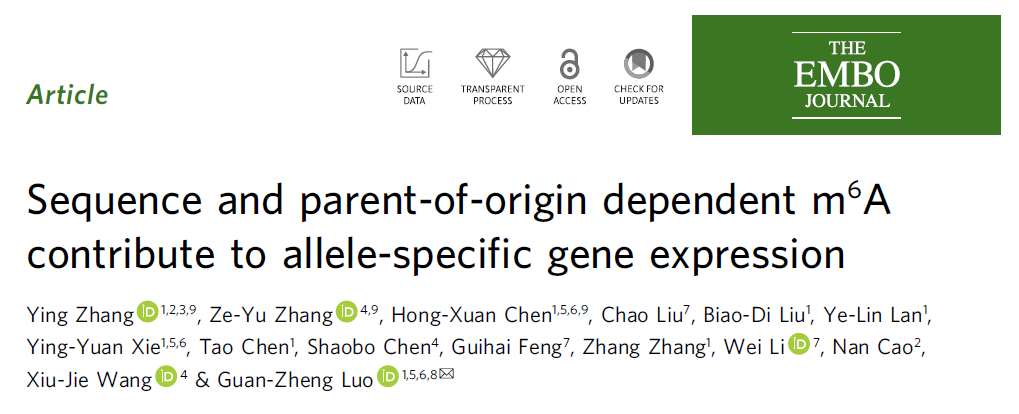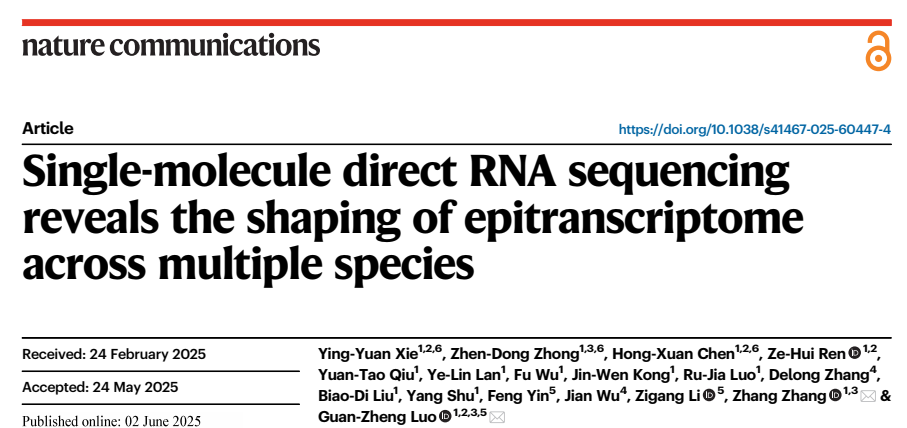


Modification on nucleic acid plays a pivotal role in controlling gene expression. Various kinds of modifications greatly increase the information-encoding capacity of DNA and RNA by introducing extra chemical group to existing bases instead of altering the genetic sequences. We are devoting ourselves into developing new tools and technologies to get unambiguous profiles of nucleic acid modifications, especially 6mA on DNA and m6A on RNA.

Genome contains gigantic information not only in coding genes but also in regulatory regions. To solve the genomic puzzle and uncover the principle of life, large-scale technologies and multi-dimensional data are increasingly demanded. By integrating big data, we hope to dissect the mysteries of genome piece by piece, and eventually, understand the basic rules how does the genome direct life.

Genome editing tools are revolutionizing the paradigm of biological researches. Here we try to utilize this tool to study the functions of genes or other regulatory elements including epigenetic modification markers. Besides the focus on improving the tool itself, we are interested in applying the innovated technology in extraordinary system, such as green alga and parasites, and understand the rule of gene regulation from a new perspective.

In biological systems, cells precisely regulate gene expression. Individuals inherit genes from both parents, but alleles from different parents often exhibit differences in expression levels or patterns, which is known as Allele-Specific Expression (ASE). ASE may arise from two main causes: first, DNA sequence differences between alleles can affect their ability to bind regulatory elements; second, parent-of-origin effects, for which gene expression depends on whether the allele was inherited from the father or the mother. Genomic imprinting is the most typical example of a parent-of-origin effect, where genes are "imprinted" to express only the paternal or maternal allele. This imbalance in allele expression, caused by sequence differences or parent-of-origin effects (particularly genomic imprinting), is crucial for mammalian processes such as embryonic development, placental formation, growth metabolism, and neurological function. Disruption of this finely tuned regulation, such as abnormal expression of imprinted genes, often leads to severe developmental issues or even embryonic lethality.
READ MORE >
On June 2nd, 2025, our lab achieved a significant breakthrough in single-molecule sequencing and RNA epitranscriptomics with our findings, titled “Single-molecule direct RNA sequencing reveals the shaping of epitranscriptome across multiple species”, published in Nature Communications. In this study, we developed a high-precision single-molecule m6A detection tool, SingleMod, based on nanopore direct RNA sequencing (DRS), and systematically portrayed the m6A single-molecule epitranscriptome across multiple human cell lines and distant species unprecedentedly. This work unveils a series of previously hidden m6A features and evolutionary patterns.
READ MORE >
Our lab recently published a research article titled “Comprehensive analysis across mammalian tissues and cells decipher the underlying mechanism of m6A specificity” in RNA. Congratulations to Guo-Shi Chai! This work systematically evaluates 193 published m6A-seq datasets to identify ~1.5 million high-confidence m6A sites in human and mouse, revealing distinct characteristics and functional roles of m6A across different cell lines and tissues.
READ MORE >